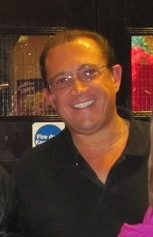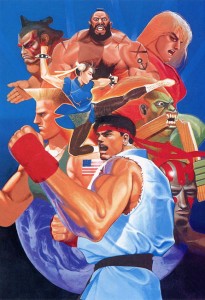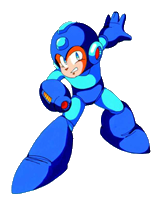Whenever one thinks of Capcom, properties like Street Fighter and Mega Man instantly come to mind. The company is firmly established as one of the premier publishers in gaming, and its long and storied history includes some of the most revered classics in history. It’s hard to think of a time when  there wasn’t at least one Capcom franchise taking the world by storm, and whether it was a platformer, fighter, or shooter, Capcom had gamers covered.
there wasn’t at least one Capcom franchise taking the world by storm, and whether it was a platformer, fighter, or shooter, Capcom had gamers covered.
All of this exposure is the result of the hard work by Capcom’s marketing division, which was run by Joe Morici. With over 50 professionals under his command, Morici set about making the characters and games published by Capcom into household names. During his nearly decade-long tenure, Street Fighter II exploded onto the scene, Strider took arcades by storm, and a certain blue robot made his debut.
Mr. Morici was kind enough to chat with us about his time at Capcom and some of the games he marketed.
Sega-16: What was Capcom’s initial impression of the Genesis?
Joe Morici: As a staunch supporter of the NES, many gamers didn’t think the company would ever release games on the Genesis. Capcom Japan was a staunch supporter of Nintendo from the beginning. As Sega grew in market share, Capcom Japan needed to look at developing games for the Genesis. Capcom USA pushed very hard to make content available for the Genesis here in the U.S. Based on the constant inquiries from the U.S. “about when Genesis games will be available” Capcom Japan agreed.
Sega-16: It’s been speculated that Capcom didn’t release its games on the Genesis until after it was released from its exclusivity license with Nintendo. Is this true?
Joe Morici: In the beginning that was true, but as time went on the exclusivity went by the way side. Capcom was one of the original licensees of Nintendo back in 1986 and was very much a Nintendo supporter. In turn, the development studio focused on the Nintendo platform.
Sega-16: Most of Capcom’s games on the Genesis are arcade ports reprogrammed by Sega. Why didn’t the console get more games later on, like the other Final Fight sequels and Breath of Fire?
Joe Morici: While Breath of Fire and Gargoyle’s Quest were popular the commercial success was not terrific. By the time they were open to Sega, Capcom had moved on to newer projects.
 Sega-16: Did Sega approach Capcom to license and reprogram its games for the Genesis, or did the idea originate with Capcom?
Sega-16: Did Sega approach Capcom to license and reprogram its games for the Genesis, or did the idea originate with Capcom?
Joe Morici: I believe once the decision was made to offer content on the Genesis, it was a faster development cycle to have Sega do the programming.
Sega-16: Was Capcom ready for the massive success of Street Fighter II?
Joe Morici: Street Fighter II on the Genesis could have been a much larger hit if the original ship date was met, which I recall was in June of that year, not September. That put the game against Mortal Kombat which outsold the SFII game. Capcom USA pushed to release the game in June of that year but were out voted by the development team in Japan. Acclaim out marketed Capcom to make “Mortal Monday” a huge success.
Sega-16: Street Fighter II sold better on the SNES, most likely due to the exclusivity it enjoyed as the first home release of the game. Was Capcom satisfied with the sales of the Special Champion Edition on Genesis?
Joe Morici: Capcom’s expectations were much larger, but due to the fact it was late and went against Mortal Kombat, sales were not as good as expected.
Sega-16: Mega Man: The Wiley Wars was released in Europe and Japan in cartridge form, and it appeared in North America on the Sega Channel. However, it never made it to retail. Why not? Did it have to do with the impending release of the new 32-bit consoles?
Joe Morici: Yes.
Sega-16: Why not port it over to the Saturn? That would have been a quick game out the door, since all the work was already done.
Joe Morici: Capcom took a wait and see approach in regards to the Sega Saturn. To port it over to the Sega Saturn was more difficult than it might seem.
Sega-16: You told Game Players magazine in 1993 that the original name of Mega Man (Rockman) “was horrible.” Fans argue that the the name as part of the musical context character’s names had (Roll, Bass, etc.) which was kept in the series in the U.S. Looking back at it now, do you think the name change made a difference? Personally, I can see the problems inherent in marketing a character named “Rockman.” Did the name change really help?
 Joe Morici: Yes the name change made much more sense to me, for the U.S market. Mega Man today has much more recognition worldwide than Rockman would have. The name “Rockman” at the time really had no bearing on music.
Joe Morici: Yes the name change made much more sense to me, for the U.S market. Mega Man today has much more recognition worldwide than Rockman would have. The name “Rockman” at the time really had no bearing on music.
Sega-16: Strider arcade designer Kouichi Yotsui once said that the arcade version didn’t sell well. Did this have anything to do with the decision to let Sega handle the home port?
Joe Morici: Not really. The Strider coin-op game did relatively well. The coin-op industry was in a decline at that time.
Sega-16: The U.S. Gold sequel, Journey from Darkness: Stider Returns has been widely panned, and former Tiertex programmer Allan Findlay says the game was rushed. Did Capcom take notice of this release, or was the franchise out of the company eye?
Joe Morici: Strider was one of my favorite coin-op games. In the early days of Capcom, we had a relationship with U.S Gold in England. The quality control was still in its infancy, and we were all disappointed by the end product.
Our thanks to Mr. Morici for chatting with us!

Recent Comments